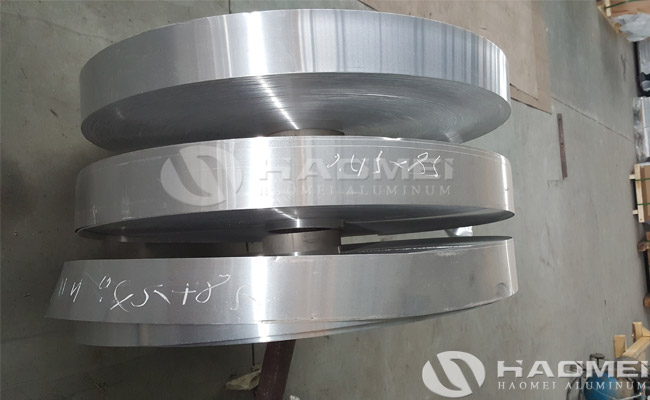Aluminum strip roll is an aluminum deep-processed product formed by aluminum coil slitting and is an important raw material in industry. The raw materials of the aluminum strip are pure aluminum or aluminum alloy cast-rolled aluminum coils and hot-rolled aluminum coils, which are rolled into thin-plate aluminum coils of different thicknesses and widths by a cold rolling mill, and then longitudinally cut into different widths by a slitting machine according to the application of aluminum strips. Commonly used aluminum strips are 1050, 1060, 1080, 1070, 1100, 3003, 3004, etc.

The specific uses of aluminum strip roll mainly include: transformer aluminum strip (transformer aluminum foil), aluminum strip for high-frequency welding hollow aluminum strip, aluminum strip for finned radiator, aluminum strip for cable, aluminum strip for stamping, aluminum strip for aluminum edge strip, etc. Aluminum strip is an aluminum deep-processed product formed by aluminum coil slitting. It is an important raw material in industry. When cutting the aluminum strip, the thickness and width can be selected (0.1mm-0.5mm) (0.5mm-1mm) and so on. The aluminum strips are soft 0 state, semi-hard H24 and full hard H18. The o state is easy to bend and has good tensile strength. Aluminum strip rolls are mainly processed by slitting machine, and the whole coil is cut (one aluminum coil is about 3 tons).
In the process of stamping, pulling, casting, forging or machining of aluminum strip roll will use stamping oil, pulling oil, release agent, cutting fluid and other processing fluids. Therefore, it is necessary for aluminum products to be cleaned-dry-protected before being put into storage. Aluminum alloy products are easily oxidized and mildewed when stored in an open or semi-enclosed space. According to the difference of pure aluminum strip and other alloy materials, the time of product discoloration is different. After cleaning and drying the product, in ordinary environment, it usually begins to oxidize after 3 days, and it becomes obvious gradually, even visible to the naked eye. In severe cases, the surface may even be uneven. For products that have been oxidized, it can be compensated by deoxidation cleaning, and protective treatment can be done to minimize the loss.



